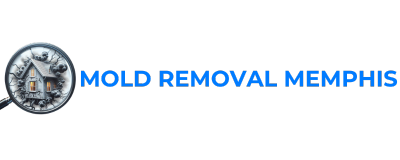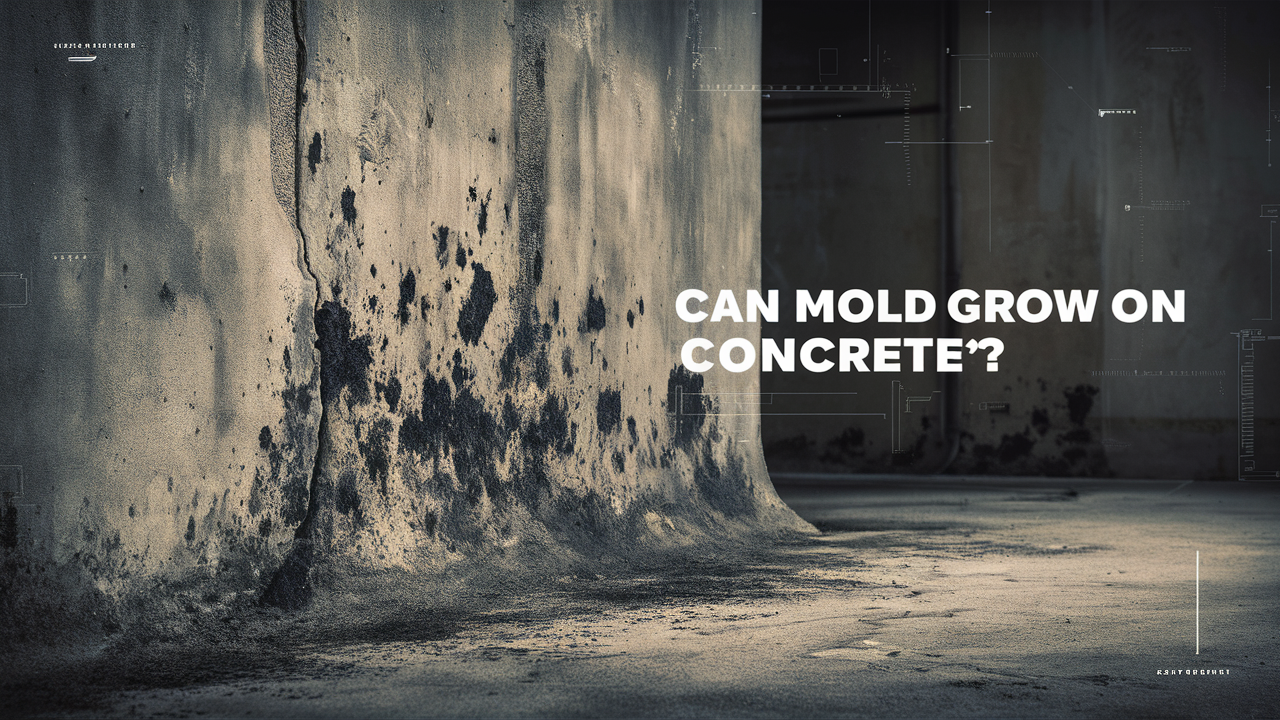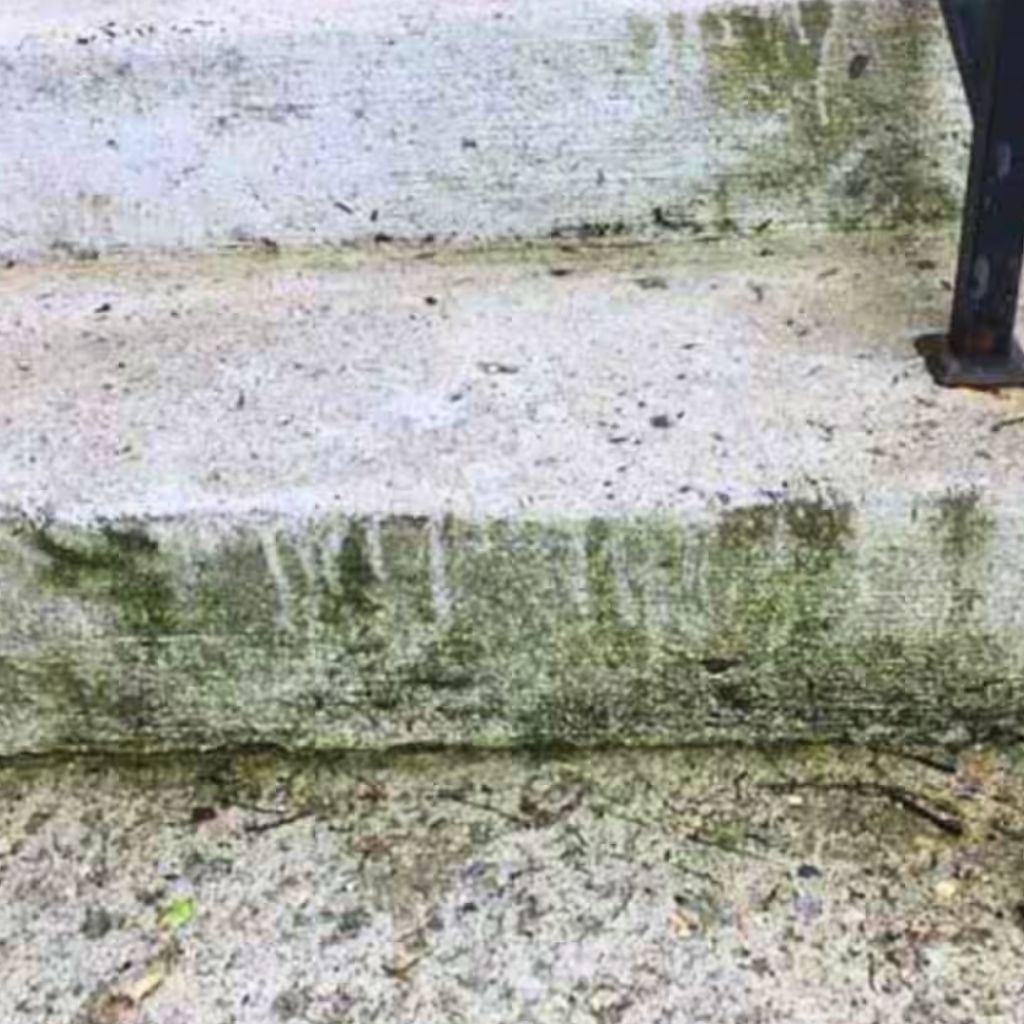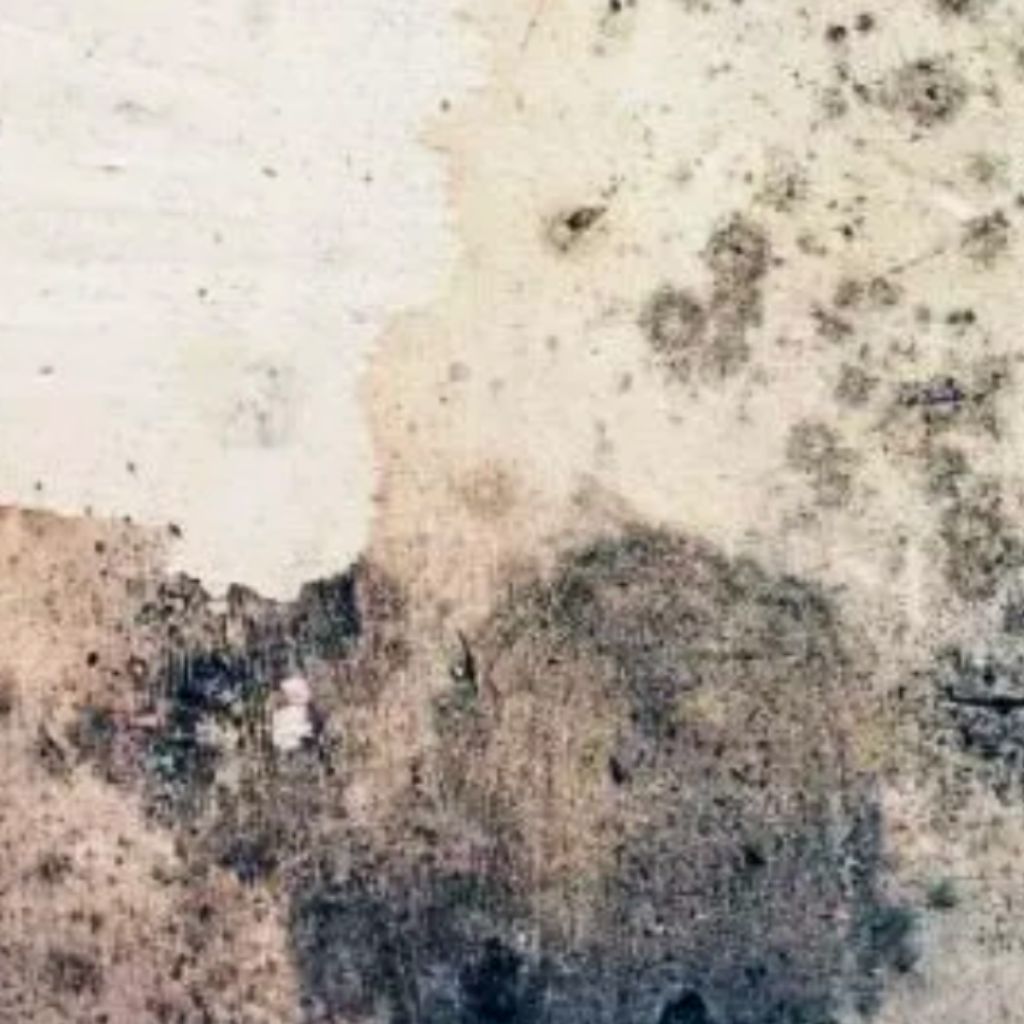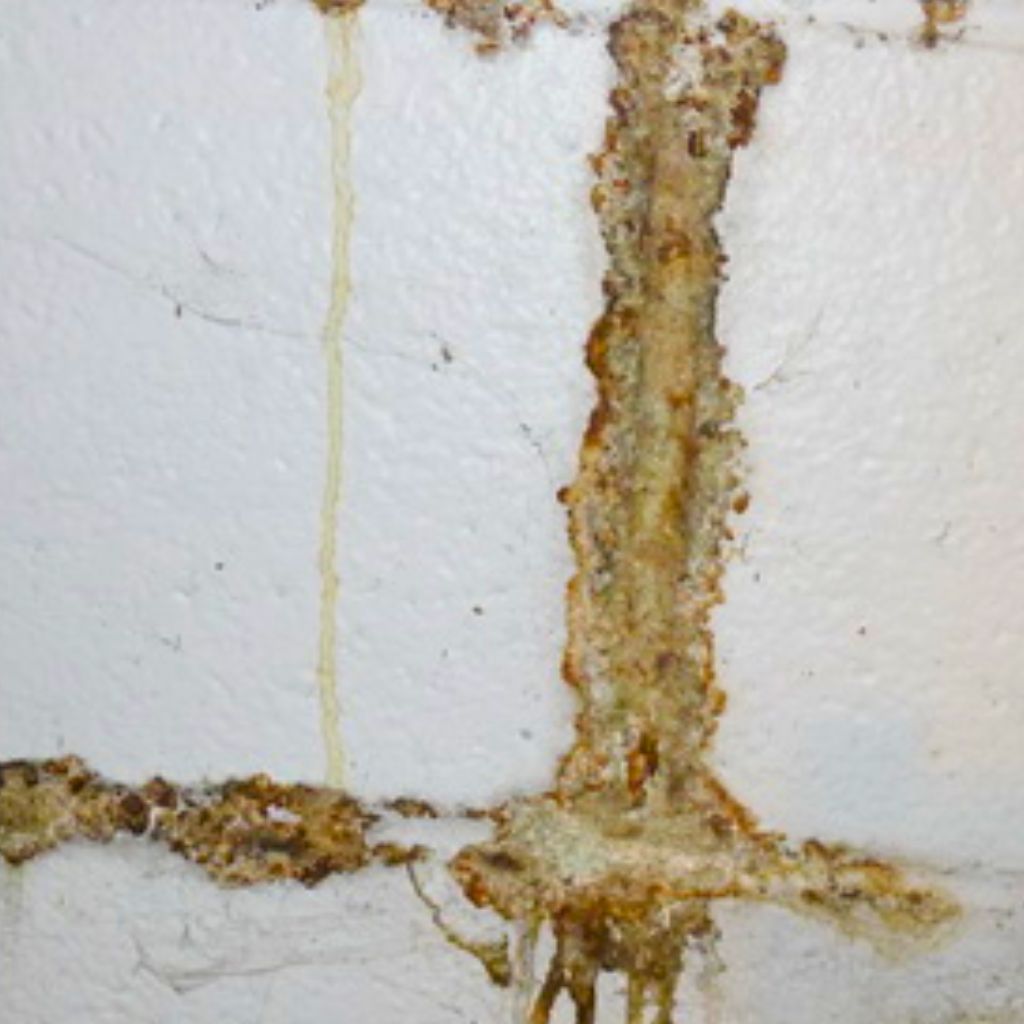Can Mold Grow On Concrete Or Cement Wall, Slab And Floor?
TL;DR: Concrete and cement surfaces can grow mold under certain conditions. While these building materials aren’t organic, they become prone to fungus when three things come together: wetness, dirt, and the right temperature. Concrete soaks up water and collects grime, making a perfect spot for tiny organisms to grow. Basements, shower areas, and shady outdoor spots are common trouble areas. Homeowners often mistake white, crusty mineral buildup for mold. To fight this problem, make sure water drains well, use dehumidifiers to remove air moisture, and ensure proper ventilation. When putting flooring over concrete floors, use vapor barriers like Visqueen to block dampness. Clean existing mold with a mix of vinegar, hydrogen peroxide, and boric acid, or use products like Drylok Extreme. Clean existing mold with a mix of vinegar and other household cleaners, or use special concrete coatings. For stubborn cases, consider moisture mitigation solutions such as VAP 2000 or AquaFin.
Concrete slabs, floors and walls in basements often develop dark spots or white fuzzy patches. This leads many homeowners to wonder if mold can develop on concrete surfaces. It’s a common issue that causes concern about home health and maintenance. Concrete is known for its strength, but it’s not immune to fungal growth. This guide explores the topic of microbial colonization on cement-based structures, addressing the factors that contribute to this problem and its impact on residential buildings.
What Does Mold On Concrete Look Like?
Mold can appear on concrete in many forms and colors, so recognizing it is important for health and safety. Mold on concrete often shows up as dark patches, which may signal the presence of black mold. Brown mold on concrete tends to create earthy spots, while green mold on concrete can look like moss. White mold usually appears as fluffy clumps.
These characteristics can sometimes be mistaken for efflorescence, which is a white, chalky deposit that forms when water evaporates. Unlike mold, efflorescence can be wiped away easily, while mold needs thorough scrubbing to eliminate. The porous surface of concrete holds moisture and organic materials, making it a good place for mold to grow.
Notably, black mold contains toxins that can cause respiratory issues, eye irritation, and other problems, especially for people with allergies or weakened immune systems.
Taking steps to prevent mold growth is important. Mold needs oxygen, warmth, humidity, and organic materials such as dust to grow. To reduce mold risks, it is vital to prevent water seepage and ensure proper drainage while keeping concrete surfaces clean. Using sealants can help block moisture from coming.
How Do You Know If It Is White Mold Or Efflorescence On Concrete?
To determine whether a white substance on concrete is mold or efflorescence, you can look for specific characteristics and use simple testing methods. Efflorescence appears as a white, powdery, or crystalline substance. It usually forms due to moisture problems. When moisture vapor moves through concrete, it carries minerals that crystallize on the surface as the water evaporates. You might notice efflorescence along cracks in the concrete. To test for it, place a piece of plastic on the floor. If the area underneath is darker when you remove the plastic, this indicates moisture vapor transmission, suggesting the presence of efflorescence.
On the other hand, mold can look similar, especially white mold. However, mold needs an organic food source to grow, which concrete does not provide. Mold typically appears fluffy or fuzzy and can come in different colors. One way to tell the difference is to dissolve a sample in warm water. Efflorescence will dissolve, while mold will not. Another method is to spray the substance with vinegar. If it bubbles, that indicates efflorescence, as it reacts with alkaline substances.
Efflorescence is not harmful to human health, but it signals moisture issues that could damage flooring and the structure of the concrete. If you find this substance in places like basements or near sources of moisture, it is likely efflorescence. If the substance keeps coming back after cleaning, it suggests there are ongoing moisture problems that need to be addressed.
What Types Of Concrete Are More Susceptible To Mold?
The types of concrete more susceptible to mold are:
- Aerated Concrete: This type of concrete is identified as having a higher susceptibility to mold growth due to its porous nature, which allows for easier moisture retention. The mold index for aerated concrete reaches up to 3 under high humidity conditions (22°C, 97% RH).
- Cellular Concrete: Similar to aerated concrete, cellular concrete also shows a high susceptibility to mold growth. It has a mold index reaching up to 3 under high humidity conditions and shows mold growth even at lower humidity levels compared to other more resistant materials .
- Concrete (K30, maximum grain size 8 mm): Regular concrete with specific characteristics (K30, maximum grain size 8 mm) also demonstrates moderate susceptibility to mold. It has a mold index reaching 3.5 to 4 under high humidity conditions (22°C, 97% RH) .
These types of concrete are more prone to mold growth due to their material composition and structural properties, which allow them to retain moisture more effectively, creating a suitable environment for mold proliferation.
How Does The Mold Index Work For Concrete?
According to the study “Mold Growth Modeling of Building Structures Using Sensitivity Classes of Materials”, the mold index for concrete is determined by assessing the visible and microscopic growth of mold on the surface of the material under various humidity and temperature conditions. The mold index ranges from 0 to 6, where:
- 0 indicates no mold growth.
- 1 indicates small amounts of mold on the surface, visible only under a microscope.
- 2 indicates several local mold growth colonies on the surface, visible under a microscope.
- 3 indicates visible mold on the surface covering less than 10% of the area or less than 50% under a microscope.
- 4 indicates visible mold on the surface covering 10% to 50% of the area or more than 50% under a microscope.
- 5 indicates plenty of mold growth on the surface covering more than 50%.
- 6 indicates heavy and tight mold growth covering about 100% of the surface.
How Can Seasonal Changes Affect Mold Growth On Concrete?
Seasonal changes can have a big impact on mold growth on concrete. Here are important points about how these seasonal changes affect mold growth on concrete:
Seasonal Humidity And Temperature Fluctuations
In warm and humid seasons, like summer and autumn, mold growth on concrete is more likely to increase. For example, high humidity levels between 80% and 100% and warm temperatures ranging from 18°C to 27°C create ideal conditions for mold to thrive.
On the other hand, during colder seasons, such as winter, mold growth generally decreases. Cold temperatures between -5°C and +3°C, along with lower humidity, can slow down mold growth. Notably, mold does not grow at temperatures below 0°C, which helps lower the mold index during winter.
Decline And Regrowth Of Mold Index
Seasonal changes can cause the intensity of mold growth to fluctuate. Long dry or cold periods can lead to a decrease in mold growth, which is reflected in a lower mold index. However, when conditions improve, such as in spring or during high-exposure times, mold growth can pick up again, resulting in an increase in the mold index.
How Does Mold Growth On Concrete Compare To Other Building Materials?
Mold growth on concrete differs from that on other building materials. This variation depends on the properties of each material and the environmental conditions. Building materials can be classified into sensitivity classes based on their potential for mold growth.
Very sensitive materials, like pine sapwood, have a high potential for mold growth because they contain nutrients that encourage mold. Sensitive materials, such as glued wooden boards, polyurethane (PUR) with a paper surface, and spruce, exhibit a moderate potential for mold growth, particularly in high humidity.
Medium resistant materials include concrete (both aerated and cellular types), glass wool, and polyester wool. These materials have a lower potential for mold growth compared to wood, but they can still support mold growth when humidity and temperatures are high.
Resistant materials, such as PUR with a polished surface, have a low potential for mold growth due to fewer nutrients and better moisture resistance.
Concrete falls into the medium resistant category. While it is less prone to mold compared to wood, concrete can still support mold growth in the presence of high humidity and warm temperatures.
| Sensitivity Class | Materials | Characteristics |
|---|---|---|
| Very Sensitive | Pine Sapwood | High mold growth potential, presence of nutrients that support mold growth |
| Sensitive | Glued Wooden Boards, PUR with Paper Surface, Spruce | Moderate mold growth potential, especially under high humidity conditions |
| Medium Resistant | Concrete (Aerated and Cellular), Glass Wool, Polyester Wool | Lower mold growth potential compared to wood, can still support mold growth under high humidity and warm conditions |
| Resistant | PUR with Polished Surface | Low mold growth potential, fewer nutrients, better moisture resistance |
How To Get Rid Of Mold Growth On Concrete?
Here’s how you can kill and remove mold on concrete:
Step 1: Assess Moisture Sources
Before attempting to remove mold, identify and address the source of moisture. Mold thrives in damp conditions, so check for leaks, humidity, or poor drainage in the area. Inspect downspouts, gutters, and the surrounding landscape to ensure water is directed away from the concrete. If moisture persists, it will be difficult to eliminate the mold effectively. Once you have identified the moisture source, take steps to fix it, such as repairing leaks or improving drainage.
Step 2: Prepare Cleaning Solutions
Prepare a cleaning solution to effectively remove the mold. A mixture of equal parts white vinegar and water can be effective for light mold infestations.
For more stubborn mold, consider using a bleach solution made of one cup of bleach mixed with one gallon of water. Alternatively, specialized commercial cleaners designed for mold removal can be used. Ensure you have protective gear on, including gloves, a mask, and goggles, to safeguard against exposure to cleaning chemicals and mold spores.
Step 3: Clean The Affected Area
Apply your chosen cleaning solution directly to the moldy areas of the concrete. Scrub the surface thoroughly to remove the mold.
Allow the solution to sit for a while to penetrate the mold before scrubbing again. If using bleach, rinse the area with water after cleaning to remove any residue. For larger areas, pressure washing can be an effective method, but be cautious as it may aerosolize mold spores.
Step 4: Dry The Area
After cleaning, dry the area completely. Use fans or dehumidifiers to reduce humidity levels and encourage faster drying. Keeping the area well-ventilated will help prevent mold from returning. Ensure that the concrete remains dry, as moisture is the primary catalyst for mold growth. If possible, maintain indoor humidity levels around 50% to discourage mold proliferation.
Step 5: Seal The Concrete
To prevent future mold growth, consider applying a penetrating sealer to the concrete. This type of sealer creates a barrier against moisture and helps keep the surface dry. Choose a product that is specifically designed for concrete and can repel water. Before sealing, ensure the concrete is completely clean and dry to ensure proper adhesion of the sealer.
Step 6: Monitor And Maintain
Regularly check the area for any signs of moisture or mold returning. Conduct routine inspections, especially after heavy rains or changes in humidity. Keep the concrete surface clean by sweeping away dirt and debris, which can provide a food source for mold.
How Do You Prevent Mold In Concrete?
Here is how you can prevent mold growth on concrete:
- Moisture Control: Install vapor barriers when laying flooring over concrete slabs, especially in moisture-prone areas. This prevents moisture from rising and being trapped between the concrete and flooring materials. Conduct moisture tests to identify any potential water damage or leaks that could lead to mold growth.
- Drainage Management: Ensure that downspouts and gutters direct water away from the foundation to prevent moisture buildup around concrete areas. Maintain proper slope on outdoor concrete surfaces to allow water runoff, reducing the chances of water pooling.
- Cleaning and Maintenance: Keep concrete surfaces clean and free from organic debris that can serve as food for mold. Use appropriate cleaning agents like vinegar or specialized anti-mold products. Regularly inspect areas for signs of moisture or mold and address any leaks or water intrusion immediately.
- Humidity Control: Use dehumidifiers in areas like basements to maintain humidity levels around 45%, which helps prevent mold growth. Improve airflow in damp areas to reduce humidity and moisture accumulation.
- Sealing and Treatment: Apply penetrating sealers on concrete surfaces to create hydrophobic barriers that repel moisture. Consider using anti-mold paints or sealers that contain fungicides for additional protection.
- Temperature Regulation: Keep indoor temperatures stable to avoid condensation on cold surfaces, which can lead to mold growth.
Can Mold Grow Under Vinyl Flooring On Concrete?
Yes, mold can grow under vinyl or laminate flooring that is placed directly on concrete. This often happens because concrete can absorb and hold moisture. If vinyl flooring is installed without a proper vapor barrier, moisture may get trapped between the vinyl and the concrete. This situation can encourage mold growth. Older homes are more at risk since concrete slabs may lie directly on soil, allowing humidity to rise. Signs of mold issues include a musty smell and visible water stains, both of which suggest moisture accumulation.
To reduce the risk of mold, it’s important to include a vapor barrier during installation. This barrier should go up the walls behind baseboards to help keep moisture from damaging the flooring. Without these precautions, homeowners might face problems such as delamination or cupping of the vinyl, which can lead to expensive repairs. Additionally, proper ventilation and regular checks for moisture can help avoid mold growth. If old vinyl flooring is removed, it’s essential to clean and dry the concrete slab thoroughly before installing new flooring.
Can Mold Grow Under Carpet On Concrete?
Mold can grow under carpets on concrete, especially when there is moisture. Concrete is porous, which means it can absorb water, creating a suitable environment for mold and mildew if carpet is placed directly on it. This problem is often worse in places with high humidity, like basements or ground floors. When carpets are installed without using effective moisture control methods, such as vapor barriers or breathable underlays, moisture can get trapped between the carpet and concrete. This trapped moisture, along with organic materials in the carpet, encourages mold growth, leading to musty smells and potential health hazards.
For example, if a carpet is installed over a damp concrete slab without proper moisture management, the chances of mold developing increase significantly. Signs of mold growth include musty odors or visible stains on the carpet or its underlay. To prevent this issue, it’s important to perform moisture tests prior to installation and to think about using a subfloor that allows moisture to escape. Additionally, using breathable underlays and running dehumidifiers in areas prone to dampness can help reduce the risk of mold.
How Fast Can Concrete Grow Mold?
Concrete can develop mold under certain conditions, especially when moisture is present. Although concrete does not have organic material—an essential requirement for mold growth—it can still support mold if organic matter builds up on its surface over time. Initially, new concrete lacks this organic material, but its porous structure allows organic matter to accumulate, particularly in damp or shaded areas.
Mold can begin to grow within 24 to 48 hours when conditions are right, and it may be visible within 18 to 21 days. Factors such as humidity, temperature, and ventilation play an important role in how quickly mold develops. For example, mold often appears on outdoor concrete surfaces like sidewalks and patios, especially in shaded spots. Inside, mold can grow on concrete basement floors and walls due to water leaks or high humidity.
What Kills Black Mold On Concrete?
To eliminate black mold on concrete, there are several effective methods. One common approach is to use a mixture of bleach and water. This can kill mold on the surface, but it’s important to remember that bleach mainly targets visible mold. It doesn’t reach deep into the concrete, which means some mold spores may remain. If moisture isn’t controlled, this can lead to mold returning.
Another option is hydrogen peroxide. It can treat surface mold without the need for scrubbing, but it should be allowed to dry before using bleach.
Pressure washing is also a popular method for removing mold from concrete surfaces. For a more powerful solution, muriatic acid can be used, but it must be diluted to avoid damaging the concrete.
Trisodium phosphate (TSP) mixed with bleach creates a strong solution that effectively kills both mold and mildew. If you’re looking for a safer alternative, vinegar is a good choice. It can penetrate porous surfaces and kill mold spores without encouraging further growth.
Protect Your Home From Mold Today!
If you’ve noticed mold on your concrete surfaces, it’s crucial to act quickly. Mold not only damages your property but can also pose health risks to you and your family. Our expert mold removal services specialize in eliminating mold from concrete, ensuring a safe and healthy environment for your home. Don’t let mold take over—contact us for a thorough inspection and effective removal solutions. Contact us (901) 250-0431 at to schedule your consultation today! Protect your home and loved ones from the dangers of mold.
